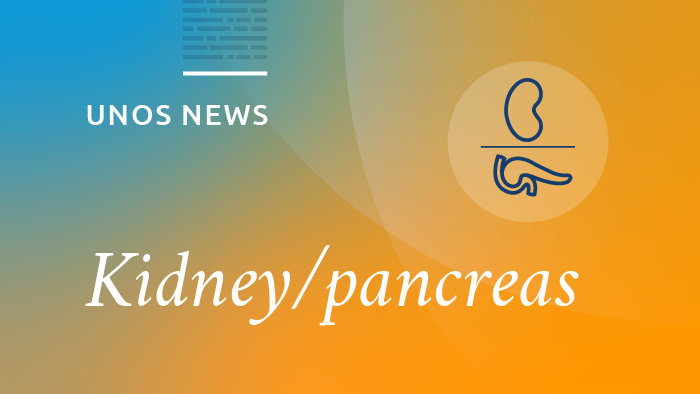The OPTN Kidney Transplantation and Pancreas Transplantation Committees, following consideration of extensive public comment, will advance updated allocation proposals to the OPTN Board of Directors for consideration at its December 3 meeting. The proposals eliminate donation service area (DSA) and region from policy and replace them with a system that allocates kidneys and pancreata based on distance between the hospital listing the transplant candidate and the donor hospital.
Statistical modeling suggests the proposed changes will reduce variation in the amount of time candidates wait for kidney transplants in various areas of the country. The proposed policies should also increase transplant rates for key groups of candidates including ethnic minorities, children, and those who are difficult to match due to high immune sensitivity.
Under each proposal, after a kidney and/or pancreas is offered for any exceptionally well-matched donor-candidate combination nationwide, the next candidates to receive offers are those listed at hospitals within 250 nautical miles from the donor hospital. Offers not accepted for any of these candidates would then be made for those at hospitals beyond a 250 nautical mile radius.
This represents a change from proposals both committees circulated for public comment in August 2019. The committees studied various alternative circle sizes, including the 250 nautical mile radius, and simulation modeling suggested each option would improve upon current allocation based on key metrics. While the two committees initially recommended circles of 500 nautical miles, a substantial theme in public comment was that the wider proposed circle would pose major logistical challenges for organ acceptance and transportation.
“We appreciate the input of everyone who commented on the proposal,” said Vincent Casingal, M.D., chair of the Kidney Committee. “There was a range of views, but many were concerned about unwanted effects we might see with a 500 nautical mile approach. The 250 nautical mile radius is more consistent with established logistics while also replacing the current local and regional boundaries with a more consistent framework nationwide.”
Also under the proposals, transplant candidates would receive proximity points based on the distance between their transplant program and the donor hospital. Proximity points are intended to improve the efficiency of organ placement by adding priority for candidates closer to the donor hospital. Doing so can minimize organ preservation time and increase the likelihood of organ function.
As proposed, candidates within the initial 250 nautical mile radius would receive a maximum of two proximity points, while those outside the initial circle would receive a maximum of four proximity points. At each level, the points would be highest for those closest to the donor hospital and would decrease as the distance grows between the donor and transplant hospitals.
The proximity points in the revised proposals also decreased from those in the public comment proposals (as many as four for candidates in the initial circle and eight for those outside the circle). “With a smaller distribution circle, logistical challenges become less of a factor,” said Silke Niederhaus, M.D., chair of the Pancreas Committee.
The committees will present their updated proposals for action by the OPTN Board of Directors at its meeting December 3, 2019, in Dallas. Additional clarifying policy components will be circulated for additional public comment early in 2020 and implemented along with the policies as approved by the board. The additional components include classifying medical urgency for kidney candidates and providing for backup offers when a kidney or pancreas cannot be used for the first intended candidate.

